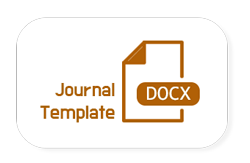Author Guidelines Peer Review Reviewers Focus and Scope Publication Ethics Copyright Notice Author(s) Fee Plagiarism Policy Statistics
Peer Review
Policy
1. All articles submitted to the journal are subject to strict, editorial review and double-blind peer review. All articles are sent to the subject expert peer reviewers for their objective opinion on the quality of content, literature review, research methodology, discussion, arguments, and conclusion.
2. All manuscripts are reviewed in fairness based on the intellectual content of the paper regardless of gender, race, ethnicity, religion, citizenry nor political values of the author(s).
3. Any observed conflict of interest during the review process must be communicated to the Editor.
4. All information pertaining to the manuscript is kept confidential. Any information that may be the reason for the rejection of a manuscript must be communicated to the concerned Section Editor only.
We are disclosing here review parameters so that authors can understand the review process and its efficiency.
Parameters (Proudly inspired by Elsevier journals review policies)
1. Do the title and abstract cover key aspects of the work, would it spark interest to the right audience?
2. Is the Introduction easy to follow for most readers of this particular journal? Does it cite the appropriate papers? Does it provide a hypothesis or aim of the study?
3. Does the Methods section provide enough details for the general reader to repeat the experiments?
4. If the reviewer skips the Methods, does the Results section give the right amount of detail to understand the essential particulars of the experiments?
5. Do the Results refer to the figures in a logical order? Do the numbers in the tables add up correctly? Are any figures/tables mislabeled or unclear?
6. Given the data that was obtained in this study, did the authors perform all the logical analyses? Did they include the proper controls?
7. Does the Discussion address the main findings, and does it give proper recognition to similar work in this field?
8. In general, is the paper easy to follow and does it have a logical flow? Are there any language issues?
9. Did the authors make all their data (e.g. sequence reads, code, questionnaires used) available for the readers?
10. Is this paper novel and an advancement of the field, or have other people done very similar work?
11. Does the paper raise any ethical concerns? Any suspicion of plagiarism (text or experiments), duplicated or tampered images, unethical animal experiments, or "dual use of research interest"?
Procedure
Each article passes through following reviews and corrections after submission till final publication, in various departments of editorial office:
1. Internal Editorial Review: In the first step one section editor will evaluate the article based on (i) Suitability with the aim and scope of the journal and (ii) Manuscript structure as mentioned at manuscript preparation guidelines.
2. External Peer Review: Article that is accepted in step 1, is sent to one subject expert for their comments and suggestions as per the review parameters and policy as mentioned above.
3. Revisions advise to authors: Article that is accepted in step 2, will receive (i) Language correction advise (ii) Peer-reviewed article file (iii) Turnitin report (if it has issues) (iv) Journal template and (v) Editorial advice.
4. Final acceptance: After we receive the revised article, the editor will evaluate the revised version, take the final decision, and communicate with the author. If necessary, authors may be asked to do re-revision to fit with the quality standards of the journal.
5. In the final stage of publication, the author will again receive a blueprint of the final galley for proofreading. After this article is published and authors are informed by e-mail.
Feedback: We welcome the opinion of the authors, researchers, and readers and their feedback on our review policy. If you have any idea to improve this procedure, please contact us at editor@academiainsight.com











